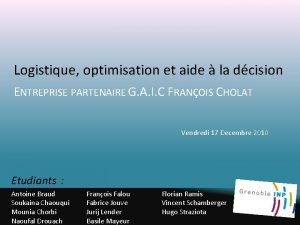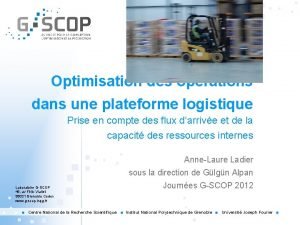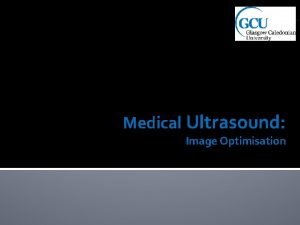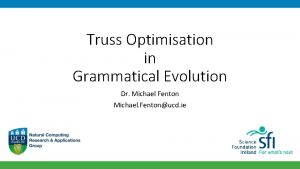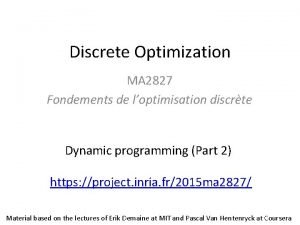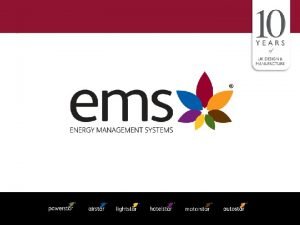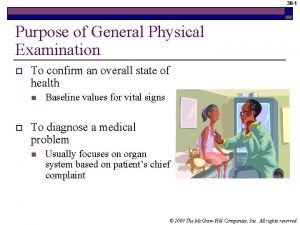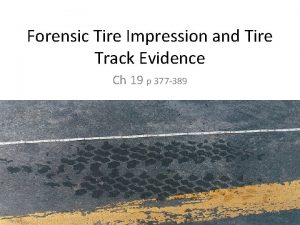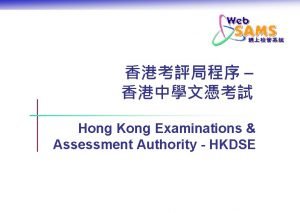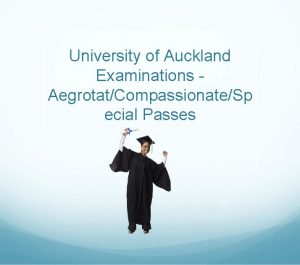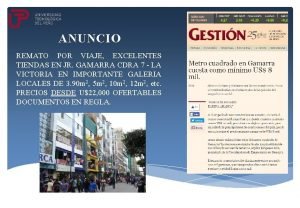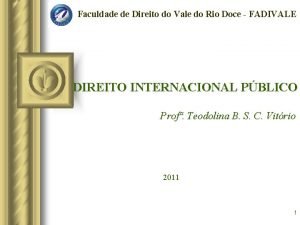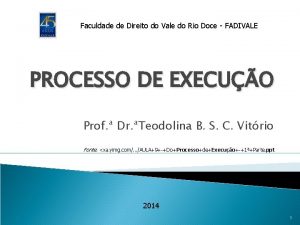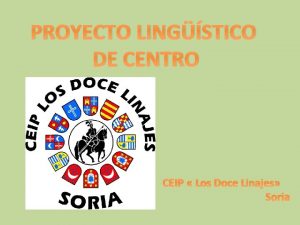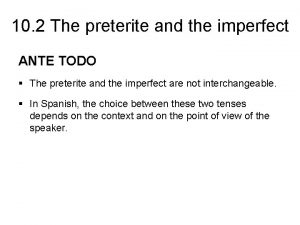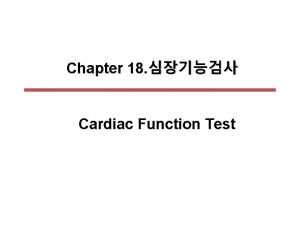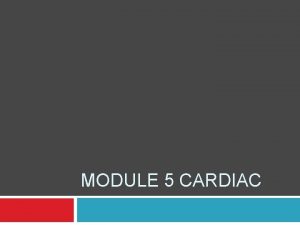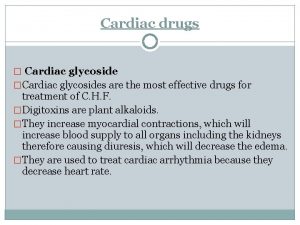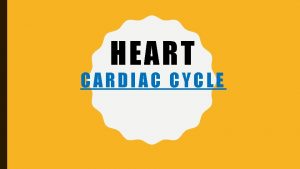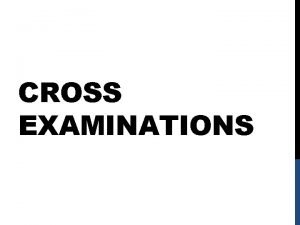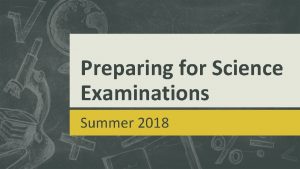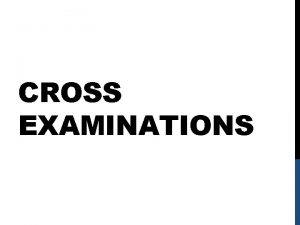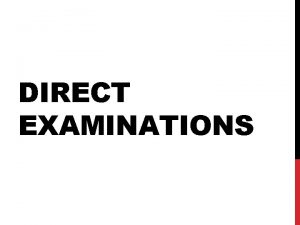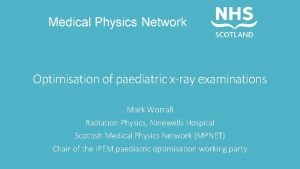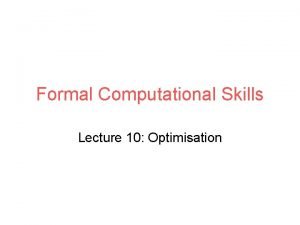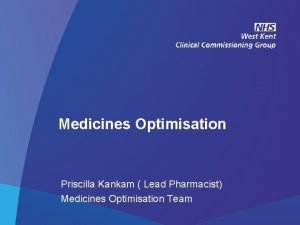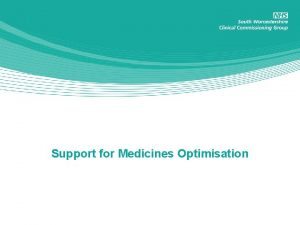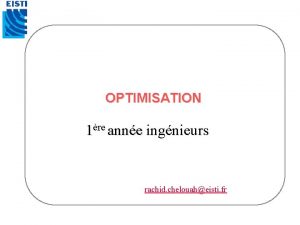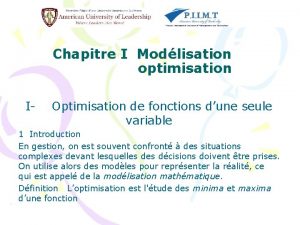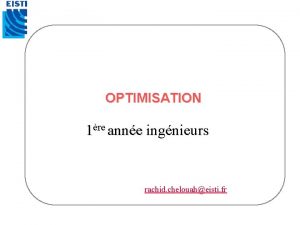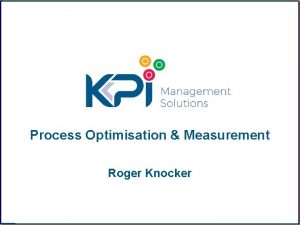DOSE OPTIMISATION IN CARDIAC EXAMINATIONS DOCE Catherine DHelft






















- Slides: 22

DOSE OPTIMISATION IN CARDIAC EXAMINATIONS (DOCE) Catherine D’Helft BSc, Hdip.

COLLABORATIVE STUDY • School of Diagnostic Imaging, University College Dublin • School of Health Sciences, Faculty of Life & Health Sciences, University of Ulster at Jordanstown Part funded by The Health Research Board, Dublin. University of Ulster at

• • Catherine D’Helft Allison Mc Gee Louise Rainford Patrick Brennan • Sonyia Mc Fadden • Ciara Hughes • John Winder

WHAT IS INTERVENTIONAL CARDIOLOGY • Evaluate circulatory system. • use • risks

OBJECTIVES • All Ireland study – Inter and intra hospital variations – Dose area product (DAP) – Comparison of different techniques/ procedures • DRL’s – Benchmarking • Optimisation for selected procedures – Doses – Image quality • Reduce radiation doses

WHY ? • Currently no set DRL’s • EU legislation (97/43/ EURATOM) – Passed into irish law – Ionising Radiations Regulations 2000 • Health risks – Patient – Staff • Increasing in use.

THRESHOLD DOSES • • • 500 m. Gy - impairment of haemopoiesis 2, 000 m. Gy - erythema 2, 000 m. Gy - cataract formation 7, 000 m. Gy - permanent epilation 10, 000 -12, 000 m. Gy - skin atrophy with telangiectasia • direct deterministic effects associated with cardiac interventional procedures are well documented literature.

RADIATION INDUCED SKIN BURNS 3 weeks post exam (AJR • July 2001, vol 177, no. 1, pg 3 -11 and 13 -20)

5 months

6. 5 months

METHODOLOGY • • Paediatric and adult studies Retrospective study Pilot study QA tests Data collection & analysis Image quality tests Set DRL’s Implement findings in clinical departments

PAEDIATRIC & ADULT STUDY • • Paediatric Patent ductus arteriosus Atrial septal defects Ventricular septal defects Septostomy procedures Co-arctation of the aorta Aortic valvuloplasty Occlusion of collateral vessels Pulmonary valvuloplasty/Pulmonary artery angioplasty Adult • Coronary Angiograms • Percutaneous Coronary Intervention (PCI/PTCA) • Pacemaker Insertion

CURRENT PROGRESS Retrospective study completed Pilot study findings Quality Assurance tests Start of data collection

RETROSPECTIVE STUDY • Intra- and inter- hospital data • 10 -month period • Dose area product and fluoroscopy time, were determined and compared for – coronary angiograms (CA), – percutaneous transluminal coronary angiograms (PTCA) – permanent pacemaker insertion procedures (PPI).

RESULTS: DAP • CA • Mean 7, 426 c. Gycm² • Range 1, 899 c. Gycm² -17, 930 c. Gycm² • PTCA • Mean 10, 744 c. Gycm² • Range 2, 848 c. Gycm² - 126, 252 c. Gycm² • PPI • Mean 3, 705 c. Gycm² • Range 356 c. Gycm 2 - 24, 294 c. Gycm²

FLUOROSCOPY TIMES • CA – Average 8. 7 mins. – Range 2 - 15. 5 mins. • PTCA – Average 15 mins. – Range 3. 9 - 47. 9 mins. • PPI – Average 8. 7 mins. – Range 1. 1 - 43. 1 mins. • Fluoroscopy time was a key determinant of radiation dose variation.

PILOT STUDY CA Results

PTCA Pilot Results

PI Pilot Results

FUTURE DEVELOPMENTS • Data collection – 16 hospitals + 2 paediatric – 120 patients per hospital • Data analysis • Image quality evaluation – Phantom – Clinical trials • Estimate LDRL’s

CONCLUSIONS • Wide variations exist • ALARA principle -Consistent with good image quality • Lack of standardisation must be addressed • Establish LDRL’s

If you would like anymore information please contact any member of the ‘DOCE’ team. Thank you!
 Optimisation de tournées excel
Optimisation de tournées excel Optimisation plateforme logistique
Optimisation plateforme logistique Dynamic work scheduling
Dynamic work scheduling Ultrasound image optimisation
Ultrasound image optimisation Dr michael fenton
Dr michael fenton Algorithms for optimisation blackjack
Algorithms for optimisation blackjack Almost essential
Almost essential Powerstar voltage optimisation
Powerstar voltage optimisation New york state teacher certification examinations
New york state teacher certification examinations General physical exam
General physical exam Forensic tire tread evidence worksheet
Forensic tire tread evidence worksheet Examinations.ie marking scheme
Examinations.ie marking scheme St joseph cupertino exam prayer
St joseph cupertino exam prayer Hk examination authority
Hk examination authority Examination office uoa
Examination office uoa Aonejewelries.pt contas de estrela barroca de ã¡gua doce
Aonejewelries.pt contas de estrela barroca de ã¡gua doce Si doce obreros pueden construir un muro en 20 dias
Si doce obreros pueden construir un muro en 20 dias Faculdade de direito do vale do rio doce
Faculdade de direito do vale do rio doce Cpc vale do rio doce
Cpc vale do rio doce Profetas menores de la biblia
Profetas menores de la biblia Ceip doce linajes
Ceip doce linajes Regla de tres compuesta
Regla de tres compuesta (fueron/eran) las doce.
(fueron/eran) las doce.
